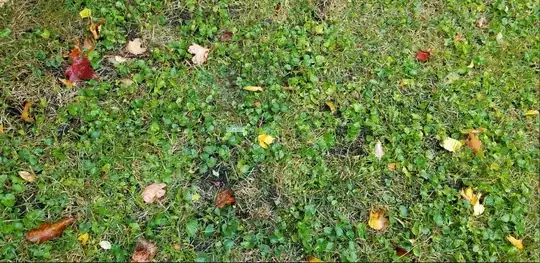I am trying to prevent these weeds from taking over again next year. Is there anything I should do or apply now (end of October) in order to kill these or stop them from coming back next year ?
Update: For all the answers below: I am not sure if the plant is violets or something else but it is hard to kill. They do make volet flowers in spring and sporadically for the rest of the summer. I tried the Weedbgone (the US version) and after multiple applications the leaves you are seeing started dying toward the edge. After mowing the grass and some rain they came back in force and I got derailed by some personal issues and I could not finish the killing. I am wondering if there is anything I can do not to see them next spring. The turf is indeed old and in need of revitalization
